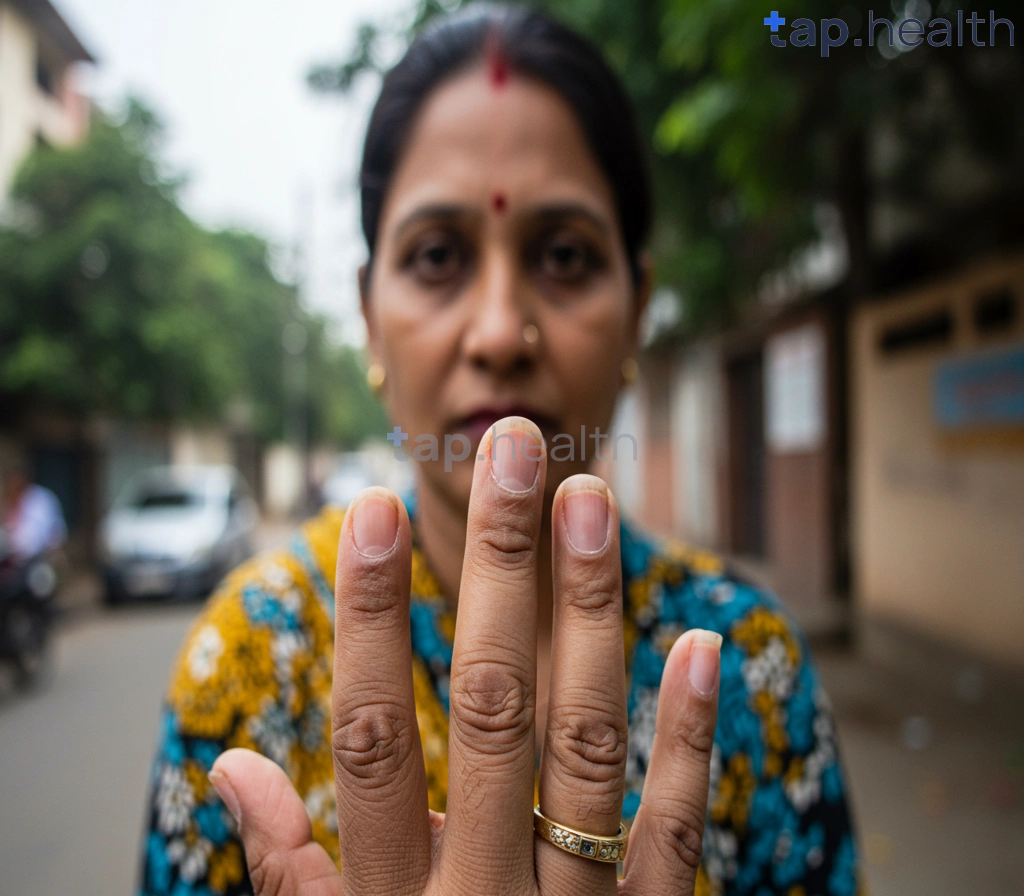Table of Contents
- Preventing Muscle Strains in Diabetics: Your Essential Guide
- Diabetes & Muscle Health: How to Avoid Injury
- Top Exercises for Diabetics: Preventing Muscle Tears and Strains
- Muscle Strain Prevention for Diabetics: A Step-by-Step Plan
- Is Muscle Weakness a Diabetes Risk? Prevention Strategies
- Frequently Asked Questions
- References
Living with diabetes often means navigating extra health considerations, and one often overlooked aspect is the increased risk of muscle strains. Preventing Muscle Strains: A Guide for People with Diabetes is designed to help you understand this risk and equip you with practical strategies to stay active and injury-free. We’ll explore the connection between diabetes and muscle health, examining how factors like nerve damage and blood sugar control play a role. This guide provides simple yet effective exercises and lifestyle adjustments to significantly reduce your chances of experiencing a painful and debilitating muscle strain. Let’s get started on your journey to stronger, healthier muscles!
Preventing Muscle Strains in Diabetics: Your Essential Guide
Muscle strains are a common concern, and for individuals with diabetes, the risk can be significantly higher. This is partly due to the high prevalence of insulin resistance in Type 2 diabetes; over 80% of those diagnosed experience this underlying factor. Insulin resistance affects various bodily functions, including muscle health and repair. Therefore, proactive measures are crucial for preventing muscle strains and maintaining mobility.
Understanding the Increased Risk
High blood sugar levels, a hallmark of diabetes, can damage nerves and blood vessels. This neuropathy can lead to reduced sensation, making you less aware of muscle strain or injury. Simultaneously, poor blood circulation in the limbs can slow down the healing process, making recovery from strains more difficult. In hot and humid climates common in Indian and tropical countries, dehydration can exacerbate these issues, further increasing the risk of muscle injuries.
Practical Steps to Prevent Muscle Strains
Proper Warm-up: Before any physical activity, always dedicate time to warming up your muscles. Gentle stretches and light cardio, such as a brisk walk, prepare your body for exertion.
Gradual Exercise: Avoid sudden increases in intensity or duration of exercise. Start slowly and gradually increase the challenge to allow your muscles to adapt. This is particularly crucial in the heat.
Hydration: Stay well-hydrated throughout the day, especially in hot and humid weather. Dehydration weakens muscles and increases the risk of strain. Regularly consume water or hydrating fluids like coconut water, a common and readily available beverage in many tropical regions.
Strength Training: Incorporate regular strength training exercises into your routine. Stronger muscles are less prone to injury. Focus on exercises that target major muscle groups.
Foot Care: Diabetic neuropathy often impacts the feet, increasing the risk of foot injuries. Regular foot checks, proper footwear, and avoiding barefoot walking are essential preventative measures. Managing diabetes effectively is key to preventing long-term complications, including nerve damage. For more information on this, check out our article on How to Prevent Long-Term Complications of Diabetes: Easy Tips.
Consult a Healthcare Professional
Remember, consulting with your doctor or a qualified healthcare professional is crucial before starting any new exercise program, especially if you have diabetes. They can provide personalized advice and guidance tailored to your individual needs and health status. This ensures you approach fitness safely and effectively. Maintaining a healthy lifestyle is crucial for managing diabetes and reducing the risk of heart complications. Learn more about protecting your heart with our guide, Protect Your Heart from Diabetes: 5 Essential Steps.
Diabetes & Muscle Health: How to Avoid Injury
Diabetes significantly impacts muscle health, increasing the risk of strains and injuries. This is especially pertinent in hot and humid climates prevalent in many Indian and tropical countries, where increased sweating can lead to dehydration and electrolyte imbalances, further weakening muscles. Nearly 15% of diabetics experience foot ulcers in their lifetime, highlighting the critical need for preventative measures to avoid serious complications like amputation. Proper care is paramount.
Understanding the Increased Risk
High blood sugar levels damage nerves (neuropathy) and blood vessels, reducing sensation and blood flow to muscles. This makes muscles weaker and more prone to injury, even from minor strains. Additionally, poor blood circulation hinders the body’s ability to repair damaged muscle tissue. This is compounded by factors common in tropical regions, such as prolonged exposure to heat and the subsequent risk of dehydration.
Practical Steps to Prevent Muscle Strains
Regular exercise is crucial, but it should be tailored to your condition. Start slowly with low-impact activities like walking or swimming, gradually increasing intensity. Always consult your doctor or a certified diabetes educator before starting any new exercise program. Proper footwear is essential, especially for preventing foot injuries. Choose supportive shoes that fit well and provide adequate cushioning. Maintaining healthy blood sugar levels through diet and medication is vital. This reduces nerve damage and improves blood flow to muscles. Staying well-hydrated is especially important in hot climates. Dehydration worsens muscle weakness and increases the risk of cramps. For more information on the importance of exercise, see our article on Why Regular Exercise is Essential for Diabetes Management.
Protecting Your Muscles in Hot Climates
In hot and humid conditions, prioritize exercising during cooler parts of the day, such as early morning or late evening. Wear light, breathable clothing and use sunscreen to avoid overheating. Listen to your body and rest when needed. Ignoring pain can lead to more significant injuries. If you’re planning travel to a hot climate, check out our tips on Traveling with Diabetes: Essential Tips for a Safe & Healthy Journey for additional advice on managing your condition while on the go.
Take Action Today
Don’t let diabetes limit your mobility. By following these simple steps and consulting with your healthcare provider, you can significantly reduce your risk of muscle strains and protect your overall health. Schedule a check-up today and discuss your exercise plan with a specialist to ensure you’re taking the best care of your muscles.
Top Exercises for Diabetics: Preventing Muscle Tears and Strains
Understanding the Risk
People with diabetes are at a higher risk of muscle strains and tears due to factors like nerve damage (neuropathy) and poor blood circulation. Maintaining healthy blood sugar levels, typically aiming for around 45–60 grams of carbs per meal (adjusting based on individual needs and doctor’s recommendations), is crucial for preventing these complications. Proper exercise, however, is equally important in strengthening muscles and improving overall health.
Safe and Effective Exercises
Focus on low-impact exercises that improve strength and flexibility without putting excessive stress on your muscles and joints. Walking, swimming, and yoga are excellent choices, especially suitable for the warmer climates of India and tropical countries. These activities are less likely to cause injuries compared to high-impact exercises like running or jumping. Remember to consult your doctor before starting any new exercise routine.
Strength Training Considerations
Incorporating strength training is vital for building muscle mass and improving stability. Start with light weights or bodyweight exercises like squats, push-ups (modified if needed), and planks. Gradually increase the intensity and duration as your strength improves. Always maintain proper form to avoid injuries. Remember to stay hydrated, especially in hot and humid climates prevalent in India and other tropical regions.
Regional Considerations & Conclusion
In India and tropical countries, the heat and humidity can impact your exercise routine. Choose cooler times of the day to exercise, and listen to your body. If you feel any pain or discomfort, stop immediately and rest. Prioritizing a balanced diet, regular exercise, and maintaining healthy blood sugar levels through careful carb management (remembering that the 45-60 gram per meal guideline is a general suggestion and needs individual tailoring) is key to preventing muscle strains and ensuring a healthy lifestyle. Consult with a healthcare professional or certified fitness trainer to create a personalized exercise plan that suits your specific needs and abilities. For more tips on managing your diabetes effectively, check out 10 Proven Tips for Effective Diabetes Management. And remember that proper foot care is also crucial; learn more with Top 5 Foot Care Tips for Diabetics | Easy Steps to Healthy Feet.
Muscle Strain Prevention for Diabetics: A Step-by-Step Plan
Managing diabetes effectively is crucial for overall health, including muscle health. Many people with diabetes experience diabetic neuropathy, a nerve condition affecting 30-50% of patients, leading to pain, reduced mobility, and increased risk of muscle strains. Understanding this increased risk is the first step in preventing injuries.
Warm-up Before Activity
Before any physical activity, even a simple walk, thoroughly warm up your muscles. This includes gentle stretches targeting major muscle groups like legs, arms, and back. In hot and humid Indian and tropical climates, consider warming up indoors initially to avoid sudden exertion in the heat. This simple precaution reduces the risk of pulling muscles.
Proper Exercise Technique
Maintaining correct posture and technique during exercise is paramount. Improper form significantly increases the risk of strains, especially for those with reduced sensation due to neuropathy. Consider consulting a physiotherapist for personalized guidance on exercises suitable for your condition and fitness level. They can help you develop a safe and effective exercise routine.
Hydration and Nutrition
Adequate hydration is vital for muscle function. Drink plenty of water throughout the day, especially before, during, and after physical activity. A balanced diet rich in protein and essential nutrients supports muscle repair and reduces the chances of strains. Remember to manage your blood sugar levels to optimize your body’s ability to repair tissues effectively. Following a proper Diet Chart for Diabetic Patients to Control Diabetes can significantly contribute to this.
Listen to Your Body
Pay close attention to any pain or discomfort. Ignoring warning signals can lead to more severe injuries. Rest is crucial for muscle recovery; don’t push yourself too hard, especially in the heat. Regularly check your feet and legs for any signs of injury, paying close attention to areas with reduced sensation due to neuropathy. Managing stress can also play a crucial role in overall health; consider exploring Effective Stress Management Tips for Better Diabetes Control.
Regular Check-ups
Regular check-ups with your doctor and diabetes specialist are essential. They can help monitor your blood sugar levels, assess your risk of neuropathy, and provide tailored advice on managing your diabetes and preventing muscle strains. In India and tropical countries, access to affordable healthcare is crucial; proactively seeking medical advice is vital for managing diabetes complications effectively.
Is Muscle Weakness a Diabetes Risk? Prevention Strategies
Understanding the Link Between Diabetes and Muscle Weakness
Muscle weakness is a common complication of diabetes, impacting daily life and increasing the risk of falls, especially in older adults prevalent in Indian and tropical climates. This weakness stems from various factors, including nerve damage (neuropathy) and poor blood circulation, both exacerbated by high blood sugar levels. It’s crucial to remember that women with diabetes face a significantly higher risk of cardiovascular complications; a 40% increased chance of heart disease compared to men with diabetes highlights the importance of proactive health management, including preventing muscle strain. This increased risk underscores the need for focused preventive strategies. Maintaining a strong immune system is also vital, as compromised immunity can further complicate diabetes management. For more information on this, read our article on Boosting Immunity While Managing Diabetes.
Preventing Muscle Strains: Practical Steps for Diabetics
Regular Exercise: Low-impact exercises like yoga, walking, and swimming are ideal. These improve circulation, strengthen muscles, and enhance overall fitness. Tailoring workouts to suit the Indian climate, avoiding peak heat hours, is vital. Consult your doctor or a physiotherapist to create a safe and effective exercise plan.
Proper Nutrition: A balanced diet rich in protein, essential for muscle repair, is crucial. This includes incorporating lentils, beans, and dairy products common in Indian cuisine. Managing blood sugar levels through a controlled carbohydrate intake is equally important to minimize nerve damage.
Foot Care: Diabetic neuropathy often affects the feet, increasing the risk of injury. Daily foot checks for cuts, blisters, or infections are essential. Wearing comfortable, well-fitting footwear is critical, particularly in tropical climates where fungal infections are more common.
Hydration: Staying well-hydrated supports muscle function and overall health. Adequate fluid intake is especially important in hot and humid climates prevalent across India and tropical regions.
Taking Control of Your Health
By implementing these preventive measures, individuals with diabetes in India and tropical countries can significantly reduce their risk of muscle strain and improve their overall quality of life. Consult your doctor or a diabetes specialist to discuss a personalized plan that addresses your specific needs and considers the unique challenges of your region. Remember, proactive management is key to a healthier and more active life. Understanding the potential impact of diabetes on your blood cell count is also crucial. Learn more about this in our article: Does Diabetes Cause Low White Blood Cell Count?
Frequently Asked Questions on Preventing Muscle Strains
Q1. Why am I more prone to muscle strains if I have diabetes?
Diabetes increases the risk of muscle strains due to nerve damage (neuropathy) and poor circulation caused by high blood sugar. This reduces sensation and slows healing.
Q2. What are some safe exercise recommendations to prevent muscle strains?
Low-impact exercises like walking, swimming, and yoga are recommended. Always start with a proper warm-up and gradually increase exercise intensity. Regular strength training focusing on major muscle groups is also beneficial.
Q3. How can I reduce my risk of muscle strains with diabetes beyond exercise?
Maintain consistent hydration, manage your blood sugar levels through diet and medication, and practice diligent foot care. Regular check-ups with your doctor are crucial for personalized advice and monitoring.
Q4. What are the added risk factors for muscle strains in hot and humid climates?
Hot, humid weather increases dehydration, which worsens nerve damage and poor circulation, significantly raising your risk of muscle strains.
Q5. What should I do if I experience a muscle strain despite preventative measures?
Rest the affected muscle, apply ice, and elevate the injured area. Consult your doctor for appropriate treatment and management.
References
- A Practical Guide to Integrated Type 2 Diabetes Care: https://www.hse.ie/eng/services/list/2/primarycare/east-coast-diabetes-service/management-of-type-2-diabetes/diabetes-and-pregnancy/icgp-guide-to-integrated-type-2.pdf
- Your Guide to Diabetes: Type 1 and Type 2: https://www.niddk.nih.gov/-/media/Files/Diabetes/YourGuide2Diabetes_508.pdf




